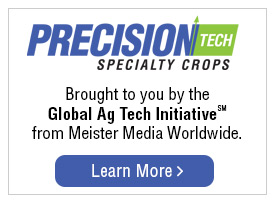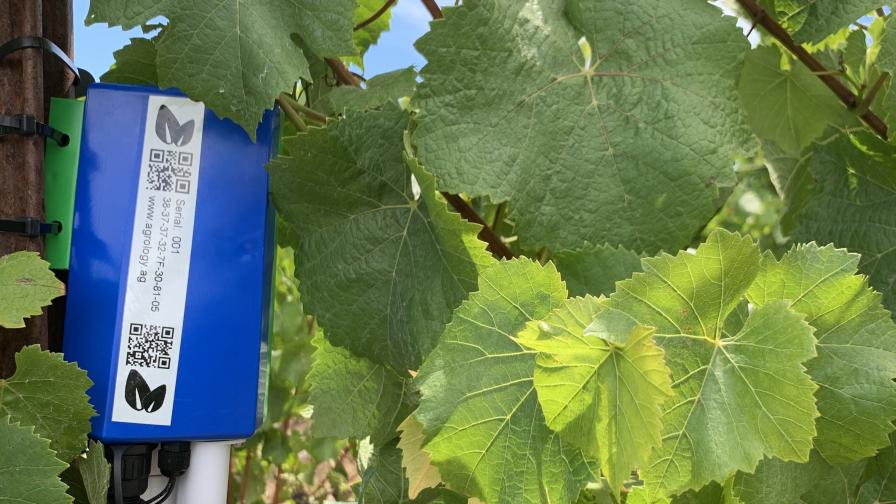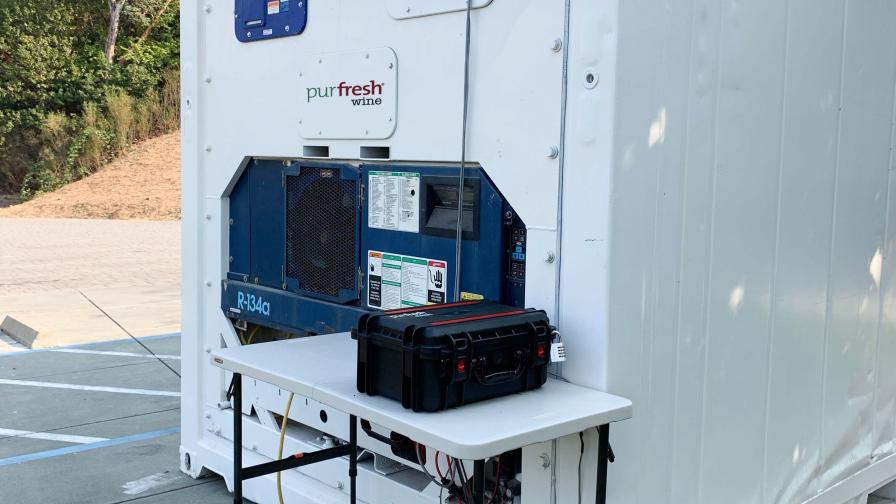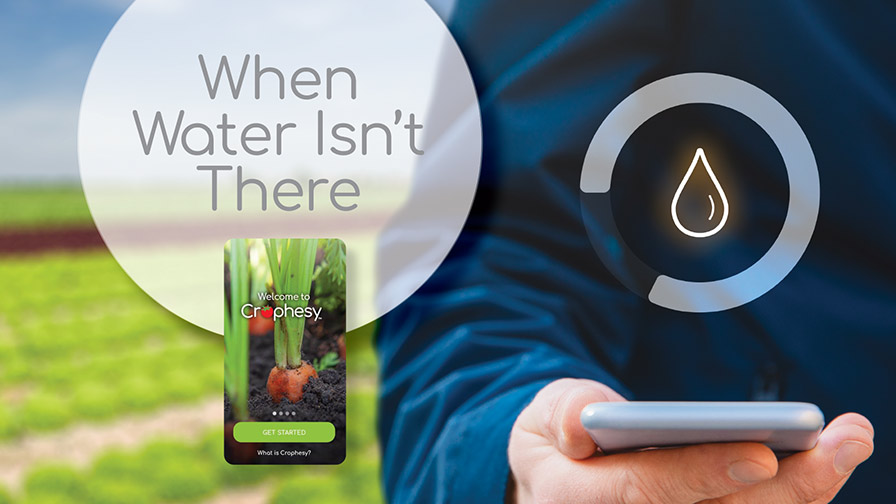Ways Grape Growers Can Clear the Air To Combat Smoke Taint

Smoke taint in grapes can strike in an instant. Worse yet, the damage might not be evident for months.
Wineries in the Okanagan Valley in British Columbia are learning as much this year after being hit by wildfires last summer. Blue Mountain Winery, an estate in Okanagan Falls, site of the Thomas Creek fire, in April relayed bad news to its wine club and loyal customers:
“The winery’s estate vineyards were impacted by smoke contamination. While attempts to mitigate the impact of the contamination were tried, the results did not meet the winery’s quality standards. We made the very difficult decision not to bottle the 2021 vintage simply because we were not willing to compromise the reputation that we have worked tirelessly to establish over the past three decades.”
Could anything have been done over the last year to prevent or remedy such a situation? Four companies — Tastry, Agrology, Purfresh Wine, and UPL — discuss the topic of smoke taint:
Why should growers be more concerned about smoke taint?
Adam Koeppel, Founder and CEO, Agrology: “Wildfires are unfortunately an ongoing threat in today’s world. The rapidly changing climate means that farmers can no longer operate as business as usual, and things happen quickly. Smoke taint can directly impact an entire crop in the blink of an eye. That’s why it’s important that growers find new ways to predict and mitigate the threat of wildfires and smoke taint.”
Christian DeBlasio, CEO, Purfresh Wine: “The effects of climate change continue to cause increased wildfires of larger sizes and for longer periods in many key growing areas, including California, the Pacific Northwest, and Australia. The more wildfires there are, and the longer they last in an area, the more likely they are to cause serious smoke taint damage to wineries’ grape harvests.”
Emily Smith, Technical Service Manager, UPL: “We have seen first-hand how detrimental smoke risk can be to vineyards. In many cases, smoke taint has led wineries to completely scrap their grapes due to smoke taint. In order to make informed decisions about your operation, awareness of wildfires local to your vineyard need to be top of mind.”
Katerina Axelsson, Founder and CEO, Tastry: “Many in the wine industry, around the globe, believe that changing conditions are leading to increased probability of wildfires and, hence, increased likelihood of smoke-tainted fruit. If these concerns are accurate, prudence would suggest that at-risk vineyards and wineries should be prepared to protect, evaluate, and mitigate the effects of smoke-tainted fruit and wine.”
How does your technology help growers?
Koeppel: “Agrology brings data from the field to the table. Growers and wineries have data in an easy-to-read dashboard that gives them the exact measurement of the compounds that cause smoke taint. Combined with targeted lab testing, it allows growers and wineries to make a very data-driven decision on what to do next.”
DeBlasio: “Purfresh Wine uses complex ozone (O3) airflow technology, pre-crush, to remove smoke taint molecules from grape skins and stimulate cellular defense mechanisms within the wine grapes, including biosynthesis of antioxidants, which generates additional natural wine flavors to overcome smoke impacts. A March 2021 Australian Wine Research Institute Molecules study demonstrates the efficacy of ozone treatment as a mitigation strategy for smoke taint.”
Smith: “Growers need to have access to in-depth information about the fires in their area in order to make informed decisions about their operation. This is why UPL created Crop S.A.F.E., an online platform that utilizes advanced data to provide critical updates on a variety of factors that affect crop production decisions, including high accumulated risk of smoke taint, temperature history, daily ozone and particulate data, air quality, wind direction, and more. This allows them to determine the best course of action for their vineyard and reduce the concentration of smoke-related aromas, flavors, and compounds in the final wine. A grower could decide to hand-harvest or harvest fruit early to minimize skin breaking or rupturing for as long as possible.”
Axelsson: “Fruit testing can be conducted by providers like ETS or Scott. Tastry currently provides earliest smoke taint analysis on post-secondary fermentation samples; typically, micro-ferments as recommended by AWRI. The micro-fermentation process releases many of the bound smoke compounds providing greater visibility on the combined effects of the exposure in the final product as it will be perceived by consumers. Subsequent to analysis, Tastry can provide the winemaker granular and specific actionable steps to mitigate the effects of smoke-taint and predict the results following treatment. Such prescriptions might include enzymatic, filtration, ozonation, and/or the application of various adjuncts.”

Agrology’s monitoring sensors can be deployed across a crop to collect data on nano-climates, regions, weather patterns, air quality and ground truth, all of which can be used to predict environmental problems, such as smoke taint.
Photo by Adam Koeppel
How difficult is it for a grower to diagnose the problem? As University of California, Davis smoke taint expert Anita Oberholster notes, “grapes can have smoke exposure without having smoke taint.”
Axelsson: “Anita is exactly right. Smoke exposure does not necessarily mean smoke-tainted wine, even if the effects of smoke exposure are untreated. On the other hand, the subtle and often longitudinal nature of the effects of smoke on fruit and, hence, wine have led many buyers of fruit and bulk wine to assign relatively arbitrary compounds, and concentrations thereof, as grounds for cancelling contracts. As a result, whether or not the fruit is actually ‘damaged’ can be a moot point if the grower or winery is unable to sell the product. For this reason, it is important for at-risk growers and wineries to develop a good understanding of the risks and potential mitigations available.”
Koeppel: “It’s a challenging problem to diagnose. We’ve measured smoke in vineyards that didn’t cause any problems, since it was old smoke from distant fires. To a grower, it’s impossible to differentiate the problematic smoke. With Agrology, we collect the data that shows how many VOCs [volatile organic compounds] and fine particles reached each particular block. It gives them the data to then decide when to baseline test, harvest, how to process, etc. We work closely with Anita, and she is a supporter of our work.”
DeBlasio: “Growers can send wine grapes to a laboratory to see if they chemically show indications of serious smoke impact, and they can also process small bucket or micro-fermentations. Most moderate-level, smoke-impacted wines must be tasted post fermentation to fully understand the long-term viability of the wine.”
When are grapes most susceptible?
Koeppel: “Obviously when grapes are closest to harvesting, that is the most volatile time. It’s also the time of year when most extreme wildfires happen. But we alert growers to smoke exposure throughout the season to help establish baselines and to track development throughout the season.”
DeBlasio: “Wildfire season in Northern California runs from July until October, with the dry season getting longer every year. Significant impact of smoke in wine grapes appears to accelerate when the grapes pass the veraison period of their growth cycle.”
When should grapes be monitored/tested and how often?
Koeppel: “We monitor VOCs and fine particles 24 hours a day. Growers get updates in real time on their phones, so if there’s an issue, they can take action. We work with growers to baseline lab test grapes as soon as we see potential smoke impact. Then we can track the grapes over time to determine the severity of impact.”
DeBlasio: “Testing wine grapes for smoke taint close to harvest is recommended and comparing the smoke’s VOC levels reported to the VOC baseline levels of the same vines from a non-smoke prior season is critical.”
Axelsson: “The impact of smoke taint can be affected by many factors, including the temperature of the wildfire, the proximity of the wildfire, the amount of time the fruit is exposed to smoke, the varietal, and the stage of development at the time of smoke exposure, among many others. These questions are probably best directed toward the many researchers around the world who have conducted extensive exploration on these topics. Anything Tastry would provide in way of a specific answer regarding contamination as it relates to the biological development of the fruit would be reprints of those expert opinions.”

Grapes sealed in a Purfresh Wine-powered, temperature-controlled container unit and treated with ozone for 24 hours.
Photo courtesy of Purfresh Wine
Once smoke taint is discovered, what treatments are available to mitigate the effects?
Koeppel: “We don’t work on the treatments of the grapes, but we can say that when risky wildfire smoke with VOCs are detected, growers can take immediate action by gathering baseline grapes for lab testing. As soon as we identify an effective spray intervention, we will recommend it to growers. If the grapes are close to harvest they can also harvest them, although they would have to make sure their teams have protective equipment and are far from harm. Wildfire threats happen quickly. We don’t know Okanagan personally, but I can say that the grape growers we work with use our technology to manage wildfire risks and protect their harvests. Having that prediction in the field, in real-time, is what really makes a difference.”
DeBlasio: “Smoke-impacted wine is not going away, and winemakers will have many hard decisions ahead of them. Smoke- tainted wine grapes can impact the long-term consumer and price viability of the finished wine across a wine spectrum from no impact to moderate impact, or full crop-loss impact. Specialized ozone (O3) treatment has now been proven to consistently improve the finished wine made from smoke-impacted grapes. To date, we do not know of any other technology that can deliver the improvement consistency that O3 treatments have been providing over the past two years. Winemakers need to know that there is no one silver bullet to 100% correct smoke-impacted wine, but through the use of O3 application to wine grapes, barreling techniques, specialized oak treatments and blending, many winemakers will be able to consistently produce moderate- to high-quality wine for their consumers to enjoy even during the smokey years.”
Axelsson: “The approach to smoke taint treatment can be proactive as well as reactive at various stages. There are steps that can be taken to protect the fruit prior to smoke exposure and remove smoke taint compounds prior to pressing. Additionally, there are methods to remove smoke taint compounds post-fermentation (enzymatic, filtration) and ameliorate the perception of smoke taint compounds in finished wine. Tastry does not provide these services, but we work with those who do. One or all of these approaches could be reasonable courses of action depending on the circumstances.”
Does this problem affect grape growers exclusively?
Koeppel: “Grape growers are the most impacted by wildfires and smoke taint, but other growers do have to worry as well. Crops like strawberries, blueberries, and even rice could be impacted. For other crops with heartier skins, growers focus on protecting their teams from impending fire threats or keeping their livelihoods safe. Our platform can help them take action and protect their crops.”
DeBlasio: “Smoke taint affects wine grapes more than most fruits because their skins are so critical to the wine-making process, but other fruits may be affected as well. Apples and pears seem to be resistant to smoke taint. The volatile phenols associated with it do not appear aromatically in these fruits. Wild blueberries are also more resistant than grapes.”
Axelsson: “With respect to smoke taint, Tastry has little expertise outside of grapes; however, as the offending compounds present in smoke are commonly considered negative in terms of their perception by the human palate, all growers of fruit for human consumption should be concerned of the potential negative effects such events might impart to any crop.”
Can the problem arise anywhere in the U.S.?
Koeppel: “The changing climate shows that it’s not just a regional problem. Arizona, Colorado, New Mexico, across California, Texas, and the Pacific Northwest are experiencing wildfires, and the susceptible regions continue to grow. Anywhere in the U.S. that experiences drought is at risk. Unfortunately, as the climate changes, that means a wide area in the U.S.”
DeBlasio: “Anywhere that is susceptible to wildfire can be affected, but the U.S. regions most affected at present are California, Oregon, and Washington.
Axelsson: “Smoke-tainted grapes is a problem in any region and should be a concern anywhere there is a potential for forest fires; and those areas seem to be expanding. Wine is produced in every state in the U.S., and every winery should be aware of their unique potential risk and the available practices and technologies available to protect, evaluate, and mitigate the effects of smoke-tainted fruit and wine. Wildfire events can erupt rapidly: Wineries should have protocols in place to react as efficiently as possible to any potential or eminent smoke threat.”










